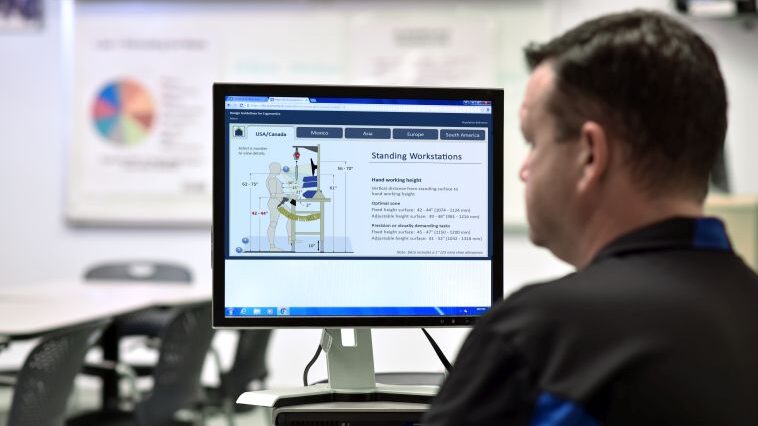As an ergonomist, I often get questions from site safety personnel and program managers regarding new and exciting technology coming onto the market, like exoskeletons, wearable sensors, and even virtual reality training systems.
Although marketing claims from the companies producing and selling these products and programs are appealing, especially their promises to be the silver bullet for solving all your health and safety problems, it’s not that simple. One area that does show promise is virtual training.
Virtual Training in Ergonomics
When it comes to training methodologies, there are various options on the market that utilize different types of simulation-based technology, like augmented reality, virtual reality and mixed reality, which fall under the umbrella of extended reality (XR). Researchers Kaplan et al. (2021) have conducted a meta-analysis to examine whether simulation-based training is as effective as traditional training. The main takeaways of their findings were:
- VR training compared to control training “showed no significant difference between levels of performance post training, regardless of the virtual immersiveness.”
- “XR experiences are as effective as traditional training approaches.”
- “XR is a more suitable medium for training on physical tasks” compared to cognitive or mixed tasks.
In a similar study conducted by Lanzotti et al. (2020), their group of researchers looked at alternative training methods related to virtual ergonomics and using serious game (SG) scenarios to test employee knowledge of safety training. The important distinction to make here is that what researchers termed “virtual ergonomics” involved presenting training using digital human model simulations completed in the Jack by Siemens software.
Virtual Ergonomics
The serious game portion of the study involved training employees on safety procedures and best practices related to a job task, and then separating them into two groups to test their knowledge using either a traditional written test, or a serious game scenario. The serious game scenario was set up as a video game that presents a virtual environment in which players are tasked with choosing “among several options to complete a planned task or use a certain object (e.g. personal protection equipment to wear, tools to use, button sequence to press, etc.) (Lanzotti et al., 2020).” From this, researchers concluded the following:
- The virtual ergonomics safety talk was more efficient than traditional classroom training and produced a 100% success rate in post-training testing of employees.
- “Compared to the traditional training methodology, multimedia contents and quantitative ergonomic analyses improve the level of attention and the awareness of the operators about their safety.”
- “Theoretical knowledge (written tests) does not necessarily correspond to real practice competence (SG).”
Together, these studies tell us that ergonomics and health and safety training doesn’t necessarily need to be expensive or flashy to produce an effective outcome. Simple visual aids, like digital simulations, can be powerful tools that lead to greater attention and emotional involvement from training participants.
To learn about other new and enticing technology checkout our blogpost, Key Takeaways on Exo Technology from the 2021 National Ergo Conference, at ehs.com!
Kaplan, A. D., Cruit, J., Endsley, M., Beers, S. M., Sawyer, B. D., & Hancock, P. A. (2021). The effects of virtual reality, augmented reality, and mixed reality as training enhancement methods: A meta-analysis. Human factors, 63(4), 706-726.
Lanzotti, A., Vanacore, A., Tarallo, A., Nathan-Roberts, D., Coccorese, D., Minopoli, V., … & Papa, S. (2020). Interactive tools for safety 4.0: Virtual ergonomics and serious games in real working contexts. Ergonomics, 63(3), 324-333.
